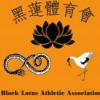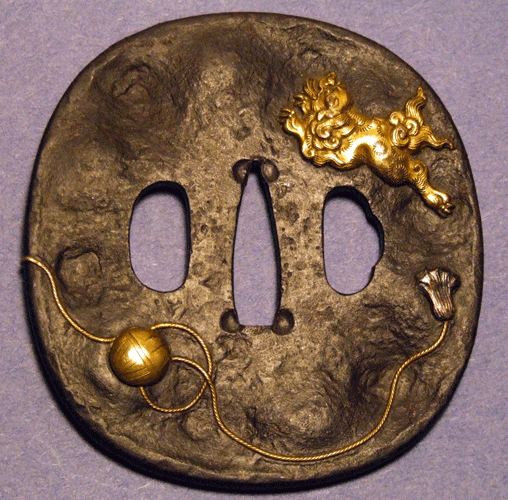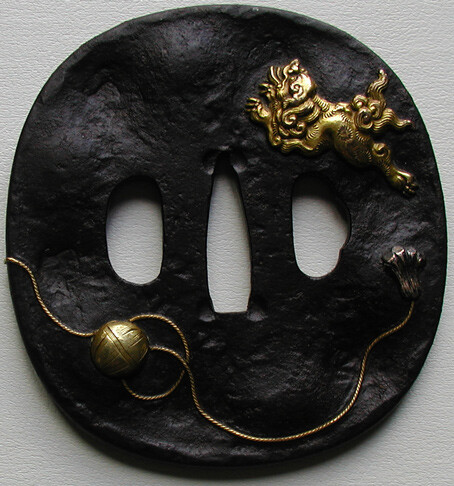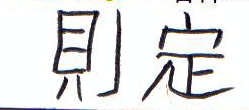-
Posts
8,372 -
Joined
-
Last visited
-
Days Won
20
Content Type
Profiles
Forums
Events
Store
Downloads
Gallery
Everything posted by John A Stuart
-
Hi Simon, When a sword has no temper in the boshi it has a fatal flaw and is a conversation piece with only a few words. Pity, oooh darn, ah well. Does the fittings have value? Well, at the price it is now, I think not. I would pass on this. Pity. John
-
Hi Brian, So, sounds like another way of saying gimei. I've seen examples of this on tsuba if I remember aright and there is a signature of the actual artisan as well. A nijimei okakke-mei just seems unproven as to what the intent was in the 13th cent. without any inscribed dedication. Thanks Brian Steve, the Rai attribution smacked my face at that price (so far). John
-
Hi All Can some one tell me if okakke-mei means the same as gimei. John
-
Hi Mike, At least those mom's could be sure that their kids were eating something healthy. The paste I had in primary school in the 50's was eaten by quite a few constantly, it smelled like peppermint. What was in that ? Rendered horse hoofs? Whew!!
-
Hi Scott, I never noticed that before, so, looked to see if there was more activity in any of mine on one side than the other and then flipped through some pics of blades I have. I couldn't see any consistent difference of one side of the swords over the other. There are swords that have different hamon on either side but that is intentional. John
-

Sword societies in australia
John A Stuart replied to jester78's topic in General Nihonto Related Discussion
Hi Jester, There is a fellow on SFI that mentioned his interest in starting a club. Here is a link to the thread. Unless you are the same fellow? John http://forums.swordforum.com/showthread.php?t=76312 -
Hi Ford, The pic of the tsuba I posted was done with a scanner. I don't trust the reproduction sometimes, so, I took a new digital photo of it for you to see. I wish to know if the surface seems suspect still. I paid a fair buck on this one and if it is not right, well. The hitsuana have slight rusting and the shiny areas on the inside at the tagane marks that show a short period of mounting. The tassels show some wear to the sivering with a copper sheen coming through, though, the gold overlay seems thick and pristine. Looks good to me and is just over 100 years old but I do not want to be fooled. John
-
Hi Keith, Lots of possibilities, thanks. Is Ted all sorted out now after his move ? back to the old grindstone ? John BTW All we have is metal lathes for shafts and the like and our milling machines are fairly large. Could I use the drill press to turn these down ? It works fine on metal dowell and taper pins ? John
-
Hi Brian, This rice I am talking about is so short it is almost round :lol: ,but the main thing about it is that it is really sticky. John
-
Hi Ray, If this tsuba was made during the bakumatsu or early Meiji periods I think it would look just like this. Not much patina would form as compared to 500 yr old examples. Also if it was kept unmounted and in a drawer, say. John Here is an example of one from the period.
-
Hi Andreas, There is a rice that is especially good for this. It is a glutinous rice and really sticky. I have a big bag of it for rice balls. Don't know its' name. Just scooped mine into a plastic bag from a big bin. John
-
Hi Ray, Of course get a pro. I do not get it though. What do you mean over cleaned? It looks clean for sure, but, what patina should it have beyond what is there. It looks good to me. No shiny substrate, no blotches from more work done in one spot than the other and the same colour throughout even in the carving. Why mess with something that looks OK, is there something I can't see via pics? John
-
Hi John, Last time there I saw one of those, it was priced at around 450000 yen. It was a military surplus store. It was in good condition like yours. Was the price of this comparable? Fittings and saya etc. look mint. I am curious about the blade. What is your assessment of that? John
-
Hi Guido, So the synthetic material is delrin ? Thanks, that must be what I have received. The swords that I have this problem with, two, though one in particular is causing this problem, because of shrinkage of the tsuka, quite old koshirae, causing a slight misalignment that abrades my homemade mekugi and after a few removals break. These are not used for tameshigiri. The sword I use for that is a modern made sword by Howard Clark. Ted Tenold did the fitting out. This one with no mekugi at all wouldn't lose the tsuka. Well fitted. I am avoiding having new tsuka made for those two swords since they look half way decent as is,read cheap. John
-
Hi Jon, Your last post struck a note with me. I believe the hardest thing at French/Belgian front, in the trenches, to deal with, would be the waiting to be whistled forward through the barbed wire, across no mans land, against machine gun fire and artillery fire before actually reaching the hand to hand, no quarter trench fighting. I would welcome the hand to hand bit where your strength, will to survive, skill and most importantly luck came to the fore and the frenzy of combat washed away fear. It is this face to face conflict I admire rather the than the death from afar of the rifle/gun or arrow, a duel rather than the berserk melee. Massed chaos is not for me. John
-
I remember seeing that one. Nice print. Milt was it you that ended up with the lacquered hawk inro with a nice signed ojime that po had up for auction. It was a nice piece and looked similar to the hawk in your print? John
-
What you talkin' bout. Ties in perfectly with my tea basket post!!! :lol: John Oh yeah, Happy Birthday, when do we see your prezzy to your self. The hawk print? John
-
Hi All, Here is a fuchi, kashira and kojiri set I may purchase if the price maintains it'self. Showa period, that shows the basket weave pattern from which the sayagata pattern derived. John
-
Hi Ruslan, That is a good question. When you look at the left arm of the oni/kami figure on the left where the ana is you can see a line cut to maybe guide the cut for the ana. As well the mon/gate on the other side seems to be carved away. Gives the feeling that it may have been altered. I can not decide. John
-
Hi Ruslan, There were a couple of reasons some shin-shinto tsuba could be heavier in the very late Edo and early Meiji eras, as far as I know. The rules on the length of swords seemed to be relaxed around this time and longer katana and tachi sized swords were beind produced during a Koto renaissance and the metal used by some smiths to fabricate tsuba was a denser type steel. Some tsuba were being produced that were never meant to be mounted but were made for their artistic merit alone. The Koto period of sword making on the whole had large dimensions until the Muromachi period. I do not think weight can be used as a definitive indication of age although it must not be ignored. I have some older tsuba that were made for tachi that are quite heavy. Note also that I have tsuba that seem so fragile made in the shin shinto period. No fast rule here. John
-
Hi, Thanks. I noticed swords I have received lately after work having been done have had these black mekugi. They felt like plastic but must be the horn ones. I break the bamboo ones frequently. I don't overstress them often but are the horn ones as tough as bamboo? John
-
Hi All, I was wondering if anyone could direct me to a source for those black plastic mekugi. I am tired of whittling my faai ji. Thanks, John
-
Hi Tacha, If you are interested in nihonto you might contact JCCC Token Kai, 32 Hollybrook Crescent, North York, Ken Noma pres. It used to be called the Toronto Token Kai. John
-
Hi Nigel, This site has step by step info and suggestions. Worth filing. John http://pages.prodigy.net/tlbuck/tsuka/tsuka.htm
-
Hi All, Here is the kanji fopr Norisada that it looked like but 'suke' the more I stare at it seems more likely. John





